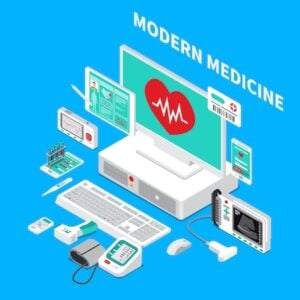Embarking on the SaMD clinical evaluation journey can feel like navigating a labyrinth blindfolded. You’re not alone in this sentiment. But here’s the thing: while the FDA’s requirements may seem daunting, they’re not insurmountable.
This guide is your compass, illuminating the path through the regulatory maze. We’ll break down the complexities, dispel common myths, and equip you with practical strategies to streamline your journey. From understanding classification impacts to leveraging emerging technologies, we’ve got you covered.
So take a deep breath, grab a coffee, and let’s demystify this process together. By the end, you’ll see that SaMD clinical evaluation isn’t a monster to fear, but a challenge you’re more than capable of conquering.
Top Takeaways:
- Software as a medical device clinical evaluation hinges on three pillars: Valid Clinical Association, Analytical Validation, and Clinical Validation. Mastering these ensures your SaMD performs accurately and fulfills its intended purpose.
- Clinical evaluation for SaMD requires robust data management and analysis. Implement secure systems, leverage advanced analytics, and maintain comprehensive documentation to streamline the FDA approval process.
- Integrating AI into SaMD introduces unique challenges. Focus on algorithm transparency, continuous learning systems, and bias mitigation to align with FDA expectations and ensure ongoing compliance.
Table of Contents:
- Navigating FDA Requirements for SaMD Clinical Evaluation
- FDA Classification and Its Impact on SaMD Approval
- Essential Components of a Robust SaMD Clinical Evaluation Process
- Overcoming Challenges in SaMD Clinical Evaluation
- Cost Considerations for Software as a Medical Device Clinical Evaluation
- Measuring Success: KPIs and Metrics for SaMD Clinical Evaluation
- Artificial Intelligence in SaMD: Implications for Clinical Evaluation
- Ensuring Ongoing SaMD Safety and Efficacy
- Future Trends and Opportunities in SaMD Clinical Evaluation
- Next Steps in Your SaMD Journey with Topflight
Navigating FDA Requirements for SaMD Clinical Evaluation
Understanding the Food and Drug Administration’s complex regulatory landscape for software as a medical device clinical evaluation can feel daunting, even for seasoned professionals. To help you make sense of it all, let’s break down what you need to know, starting with the basics.
Understanding SaMD: Definitions and Examples
SaMD refers to software intended to be used for medical purposes without being part of a hardware medical device. Typical examples include:
- diagnostic tools that analyze medical images
- monitoring systems
- digital therapeutics
The FDA recognizes the rapid evolution in this sector, and thus, their guidelines are designed to ensure patient safety while fostering innovation. According to the International Medical Device Regulators Forum (IMDRF), the number of SaMD certifications is steadily rising, highlighting the growing acceptance and reliance on these advanced solutions.
- Artificial Intelligence and Machine Learning driven SaMDs now represent 22% of all FDA-approved Software as a Medical Devices.
- According to the FDA, the number of SaMD premarket submissions has seen a steady increase over the past five years.
- By 2024, the FDA has authorized 882 AI/ML-enabled medical devices, which include a subset of SaMD products.
- The IMDRF reports that there are hundreds of SaMD products currently on the market, with an annual growth rate exceeding 20%.
- The majority of SaMDs gain approval through the premarket notification pathway, with 93.8% taking this route, while a mere 0.97% are approved through the 510(k) exemption process.
If you’re looking to grow a medical practice, understanding the nuances of SaMD clinical evaluation can provide a technological edge needed for scaling efficiently.
What Is Not Considered a SaMD?
To avoid confusion, it’s crucial to distinguish what does not qualify as SaMD. Here are some examples:
- Software for Administrative Purposes: Tools that manage patient records or billing systems.
- Non-Medical Software: Apps that promote a healthy lifestyle but don’t offer medical advice or diagnosis.
- Hardware-Controlled Software: Software integral to the functioning of a specific piece of medical hardware, such as software embedded in an MRI machine.
These distinctions are vital for ensuring that your focus and resources are directed appropriately during the clinical evaluation process.
Key Regulatory Frameworks and Guidelines
Understanding the regulatory landscape is crucial. The FDA’s guidance documents, including “Software as a Medical Device (SaMD): Clinical Evaluation” and “Deciding When to Submit a 510(k) for a Software Change to an Existing Device,” lay down the foundation.
The process hinges on three pillars: Valid Clinical Association, Analytical Validation, Clinical Validation. Let’s break these down:
Valid Clinical Association
Is there a scientifically established association between your SaMD’s output and the targeted clinical condition or physiological state?
- Definition: Establishing the strength of the association between your SaMD output and the targeted clinical condition.
- Pitfall to Avoid: Don’t rely solely on published literature. We’ve seen clients struggle when they neglect to include real-world evidence in their submissions.
- Best Practice: Create a cross-functional team including clinicians, data scientists, and regulatory experts to evaluate the clinical association comprehensively.
Establishing scientific validity is crucial when demonstrating a Valid Clinical Association. This involves rigorously evaluating the strength of the association between your SaMD output and the targeted clinical condition.
Analytical Validation
Does the SaMD correctly process input data to generate accurate, reliable, and precise output data?
- Definition: Demonstrating that your SaMD correctly processes input data to generate accurate, reliable, and precise output data.
- Pitfall to Avoid: Overlooking edge cases or rare scenarios in your testing can lead to unexpected behavior in real-world use.
- Best Practice: Implement continuous integration and automated testing pipelines to catch potential issues early in the development process.
Partnering with an experienced healthcare app developer is crucial for creating robust SaMD solutions that meet FDA guidelines and enhance patient care.
Clinical Validation
Does the SaMD produce a clinically meaningful output associated with the intended use of the SaMD in the target population in the context of clinical care?
- Definition: Proving that your SaMD achieves its intended purpose in the target population and use context.
- Pitfall to Avoid: Underestimating the time and resources needed for clinical validation. We’ve seen projects delayed by months due to poor planning in this phase.
- Best Practice: Engage with the FDA early through the Pre-Submission (Pre-Sub) program to align on the design and endpoints of clinical studies.
These criteria ensure that the SaMD performs accurately, fulfills its intended purpose, and has a measurable impact on clinical outcomes.
Besides the FDA, for the most up-to-date information on international SaMD regulations and guidelines, check out the IMDRF website accessed regularly by industry professionals; it provides valuable resources and documentation.
Common Misconceptions and How to Avoid Them
Let’s cut to the chase—there are several misconceptions about SaMD that can derail your journey to FDA approval if not addressed properly.
Misconception 1: SaMD is Like Typical Medical Devices
One common misconception is that obtaining FDA approval for SaMD is akin to traditional medical devices. This is far from true. Unlike traditional hardware, SaMD must continuously demonstrate compliance through post-market surveillance due to its evolving nature.
Misconception 2: SaMD is Just Another Software
Many believe that SaMD can be evaluated like any other software application. This is far from the truth. The stakes are significantly higher. The software must comply with rigorous standards to ensure it doesn’t compromise patient safety.
Misconception 3: One-Time Approval Equals Lifetime Compliance
Another common pitfall is assuming that once you get FDA approval, you’re set for life. Wrong again. SaMD must undergo continuous post-market surveillance to adapt to evolving clinical data and cybersecurity threats.
Misconception 4: Overlooking Cybersecurity
In today’s digital age, cybersecurity is paramount. Neglecting this aspect can result in delays in approval and potential vulnerabilities post-launch. Make cybersecurity an integral part of your clinical evaluation plan.
Effective clinical decision support system implementation can greatly benefit from lessons learned in SaMD evaluations, ensuring that your systems are both compliant and clinically effective.
FDA Classification and Its Impact on SaMD Approval
Understanding how the FDA classifies medical devices is critical for navigating the approval process effectively and avoiding costly delays.
Understanding FDA Device Classifications
The FDA classifies medical devices, including Software as a Medical Device (SaMD), into three categories based on risk: Class I (low risk), Class II (moderate risk), and Class III (high risk). These classifications dictate the level of regulatory control necessary to ensure safety and effectiveness.
- Class I: Generally subject to the least regulatory control. Most Class I devices are exempt from premarket notification 510(k).
- Class II: Requires premarket notification (known as a 510(k) submission, named after the section of the Food, Drug, and Cosmetic Act that describes this process), which demonstrates that the device is substantially equivalent to a legally marketed device.
- Class III: Requires premarket approval (PMA), the most stringent type of device marketing application, necessitating extensive clinical data.
Each classification impacts the approval timeline, required documentation, and testing rigor. Misclassifying your SaMD can lead to delayed approvals and increased costs.
How Classification Affects the Approval Process
Your SaMD’s classification sets the stage for its regulatory journey. Here’s how each class influences the process:
Class I Devices
Compliance is generally straightforward, involving general controls like adherence to medical device software development best practices and Good Clinical Practice (GCP) guidelines. However, don’t let the lower risk fool you—documentation and adherence to quality management systems (QMS) are still critical.
Class II Devices
This is where things get interesting. You need to demonstrate substantial equivalence to a predicate device. The 510(k) process requires a thorough comparison, including performance testing and clinical data.
Class III Devices
The PMA process for Class III devices is exhaustive. It demands rigorous clinical trials, comprehensive data submissions, and potentially several rounds of FDA review. Expect a lengthy and resource-intensive approval process.
Documenting Development Processes for FDA Compliance
Documentation isn’t just a box-ticking exercise—it’s a lifeline through the approval maze. Here’s what you need to focus on:
- Design History File (DHF): Captures the entire design process, from initial concept to final design verification and validation.
- Device Master Record (DMR): Contains all details necessary to produce the device, ensuring consistency in manufacturing.
- Device History Record (DHR): Documents each unit’s production history, verifying it was manufactured according to the DMR.
Meticulous documentation is non-negotiable. It not only facilitates smoother FDA reviews but also acts as a defense mechanism against potential litigations or recalls.
Preparing for Extensive Paperwork and Research
Brace yourself for paperwork—lots of it. The FDA’s software as a medical device (SaMD) clinical evaluation guidance emphasizes comprehensive documentation. Here are some tips to manage this effectively:
- Build a Skilled Team: Ensure your team includes regulatory affairs experts, clinical researchers, and technical writers adept at navigating FDA requirements.
- Invest in Quality Management Systems (QMS): Automated QMS tools can streamline documentation, making it easier to manage and retrieve records.
- Regular Audits and Reviews: Conduct internal audits to ensure compliance with FDA guidelines. Regular reviews can catch discrepancies early, saving you from costly delays later.
The complexities of EHR data migration highlight the need for meticulous planning, similar to the detailed documentation required in SaMD clinical evaluations.
Essential Components of a Robust SaMD Clinical Evaluation Process
Clinical Evidence Generation Strategies
Let’s get into the nitty-gritty of clinical evaluation for SaMD. Generating robust clinical evidence is the backbone of any successful SaMD approval process. It’s not just about collecting data; it’s about collecting the right kind of data, at the right time. Here’s how you do it:
- Define Clear Objectives: Start with well-defined clinical objectives. What specific clinical outcomes are you aiming to impact? Clarity here sets the tone for your entire evaluation.
- Select Appropriate Study Designs: Randomized controlled trials (RCTs) are often the gold standard, but they’re not always feasible or necessary for SaMD. Consider observational studies, retrospective data analysis, or even real-world evidence.
- Utilize Digital Health Technologies: Leverage wearable devices, telehealth platforms, and other digital tools to collect real-time data. This can offer a more holistic view of patient outcomes and software performance.
- Engage with Regulatory Bodies Early: Don’t wait until you’ve collected all your data to seek FDA guidance. Engage early and often to ensure your clinical study design aligns with regulatory expectations.
Data Management and Analysis in SaMD Evaluation
Now, let’s talk data. Effective data management and analysis are crucial for clinical evaluation for SaMD. Here’s what you need to do:
- Implement Robust Data Collection Systems: Use secure, compliant systems for data collection. Ensure that your data is accurate, complete, and tamper-proof.
- Ensure Data Integrity and Security: Given the sensitive nature of health data, robust cybersecurity measures are non-negotiable. Implement encryption, regular security audits, and compliance with standards like HIPAA.
- Leverage Advanced Analytics: Use machine learning and artificial intelligence to analyze your data. These technologies can uncover patterns and insights that traditional methods might miss.
- Maintain Comprehensive Documentation: Document every step of your data management process. This includes protocols for data entry, storage, analysis, and sharing. Transparency here will pay dividends during the regulatory review.
Strategies to integrate a health app with Epic EHR EMR can offer valuable insights into interoperability challenges often faced during SaMD development and evaluation.
Overcoming Challenges in SaMD Clinical Evaluation
When it comes to navigating the FDA SaMD clinical evaluation landscape, challenges are par for the course. Clinical CIOs and VPs of Technology often grapple with unique hurdles that can make or break their SaMD solutions. Let’s delve into some of these key challenges and how to effectively address them.
Interdepartmental Collaboration: Bridging the Gap Between Clinical and IT Teams
One of the most significant challenges in the FDA SaMD clinical evaluation process is fostering effective collaboration between clinical and IT departments. These teams often operate in silos, speaking different “languages” and prioritizing distinct goals. Here are a few strategies to foster collaboration:
Unified Goals
Establish joint objectives that align both clinical and IT priorities. This ensures everyone is rowing in the same direction.
Regular Communication
Hold regular cross-departmental meetings to discuss progress, challenges, and next steps. Transparency here is key.
Integrated Workflow Tools
Utilize platforms that facilitate seamless communication and project management across departments. Tools like Jira or Asana can help keep everyone on the same page.
Cross-Training
Encourage team members to gain a basic understanding of each other’s domains. This can be achieved through workshops or collaborative projects.
Addressing Cybersecurity Concerns in SaMD
In today’s digital age, cybersecurity isn’t just a buzzword—it’s a critical component of SaMD clinical evaluation. The threat landscape is continuously evolving, and any vulnerability can have severe implications, including jeopardizing patient safety and delaying FDA approval.
Key Cybersecurity Strategies:
- Security by Design: Integrate cybersecurity measures from the outset of the development process. This includes secure coding practices, regular vulnerability assessments, and encryption of sensitive data.
- Regulatory Compliance: Ensure your cybersecurity framework complies with regulatory standards such as HIPAA, GDPR, and the FDA’s cybersecurity guidelines.
- Continuous Monitoring: Implement real-time monitoring systems to detect and mitigate threats as they arise. This proactive approach can prevent issues from escalating.
- Incident Response Plan: Develop and regularly update a comprehensive incident response plan. This should outline steps to take in the event of a breach, including communication strategies and recovery procedures.
Exploring web3 development in healthcare could open new avenues for more secure and decentralized data management, a critical aspect of post-market surveillance for SaMDs.
Strategic Considerations for SaMD Startups
Navigating the FDA SaMD clinical evaluation doesn’t have to be an odyssey, especially for startups. With the right strategies, you can streamline the process and avoid common pitfalls.
Classification Strategy
Sometimes, it’s possible to position your SaMD strategically to fall into a lower risk classification. This requires careful consideration of your device’s intended use and claims. Lower classification often means less stringent requirements, which can save valuable time and resources.
De Novo Pathway
For novel SaMD without a predicate, consider the De Novo classification process. This can establish a new regulatory classification for your innovative software, offering a potentially quicker route to market compared to traditional pathways.
Pre-Submission Program
Utilize the FDA’s Pre-Submission Program to get early feedback on your classification and regulatory strategy. This can save significant time and resources in the long run. Early engagement with the FDA can also help identify potential issues before they become roadblocks.
Iterative Development
The FDA recognizes the unique nature of software development. Their guidance on “Deciding When to Submit a 510(k) for a Software Change to an Existing Device” allows for certain updates without new submissions, which is crucial for SaMD startups planning iterative improvements. This flexibility can be a game-changer in staying ahead in a rapidly evolving market.
Global Strategy
Consider international markets early. While this guide focuses on FDA’s regulatory requirements, aligning your development with global standards (like IMDRF documents outlining its SaMD framework) can facilitate easier expansion into other markets. A globally-minded strategy can open up new opportunities and streamline future regulatory processes.
For those interested in the best telemedicine apps, understanding SaMD evaluation processes can ensure these apps meet stringent regulatory standards while providing top-notch patient care.
Cost Considerations for Software as a Medical Device Clinical Evaluation
Navigating the financial landscape of FDA approval for Software as a Medical Device (SaMD) can feel like you’re trying to hit a moving target. The costs involved are substantial, but understanding them upfront can help you budget more effectively and avoid unpleasant surprises down the line. Let’s break down what you need to know about FDA software as a medical device (SaMD) clinical evaluation, cost-wise.
For a 510(k) premarket notification submission:
- Standard fee: $20,186
- Small business fee: $5,046 (for businesses with gross receipts or sales of $100 million or less)
For a De Novo classification request:
- Standard fee: $122,955
- Small business fee: $30,739
For a Premarket Approval (PMA):
- Standard fee: $432,369
- Small business fee: $108,092
The annual establishment registration fee for FY 2024 is $5,761.
These fees became effective on October 1, 2023, and will remain in effect through September 30, 2024.
In practice, this usually translates to around $20,000 for Class I SaMD, which includes a legal review and assumes that your team handles all the documentation, background research, and Institutional Review Board (IRB) studies themselves. Outsourcing these tasks will inflate costs further.
Read more on medical device cost breakdown
Additional Hidden Costs
Beyond the obvious registration and legal fees, there are other expenses that you should be prepared for:
- Clinical Trials and Studies: Whether you’re performing extensive clinical trials or smaller-scale studies, these can easily run into hundreds of thousands of dollars.
- Quality Management Systems (QMS): Implementing an effective QMS is non-negotiable. Automated tools may streamline the process, but they come at a price.
- Consulting Services: If you lack in-house expertise, consultants specializing in FDA SaMD clinical evaluation can provide invaluable guidance but at a significant cost.
Implementing chatbots in healthcare can leverage AI-driven SaMD functionalities to improve patient interaction and streamline clinical workflows.
Measuring Success: KPIs and Metrics for SaMD Clinical Evaluation
Let’s dive into the specific metrics and KPIs that can help you gauge the effectiveness of your SaMD clinical evaluation. When it comes to SaMD evaluation, not all metrics are created equal. You need to focus on indicators that provide a realistic picture of both performance and compliance.
Key Performance Indicators:
- Sensitivity and Specificity Rates
Why it Matters: These rates measure how accurately your SaMD identifies conditions or outcomes, which is pivotal for FDA approval and real-world efficacy.
- Percentage of Target Clinicians Using the SaMD
Why it Matters: High adoption rates indicate usability and acceptance among healthcare professionals, a crucial factor for long-term success.
- Number of Incidents/Error Reports per 1,000 Uses
Why it Matters: Monitoring these rates helps identify potential issues early, ensuring patient safety and maintaining regulatory compliance.
- Average Days from Submission to Approval
Why it Matters: This KPI helps assess the efficiency of your regulatory strategy and can highlight areas for process improvement.
- Improvement Rates in Patient Health Metrics
Why it Matters: Ultimately, the goal of any medical device is to improve patient outcomes. Tracking these metrics validates the clinical utility of your SaMD.
Considering the cost of EHR implementation is crucial when assessing the financial impact of integrating SaMD into your healthcare infrastructure.
Artificial Intelligence in SaMD: Implications for Clinical Evaluation
Understanding the implications of AI-driven SaMD is crucial, especially when navigating FDA guidelines and ensuring compliance. Integrating AI into SaMD brings about several unique challenges and opportunities. Here’s what you need to keep in mind:
Algorithm Transparency and Explainability
The FDA’s recent guidance (AI/ML SaMD Action Plan) emphasizes the need for algorithm transparency and explainability. This isn’t just bureaucratic red tape; it’s about ensuring that AI-driven decisions can be understood and trusted by both clinicians and patients.
- Actionable Insight: Make sure your development team documents every aspect of the AI algorithm, from data sources to training methods. This transparency is essential for gaining FDA approval and maintaining user trust.
Continuous Learning Systems
AI algorithms often evolve over time through continuous learning. While this adaptability can improve clinical performance, it also introduces regulatory complexities.
- Actionable Insight: Implement robust version control and monitoring systems to track changes in algorithm behavior. Regularly update the FDA on significant modifications to ensure ongoing compliance.
Data Integrity and Bias Mitigation
AI systems are only as good as the data they’re trained on. Ensuring data integrity and mitigating bias are critical for both clinical validity and regulatory approval.
- Actionable Insight: Use diverse datasets that reflect real-world scenarios to train your AI models. Conduct thorough bias assessments and implement correction mechanisms where necessary.
Regulatory Perspectives on AI in Medical Devices
The FDA has been proactive in providing guidance for AI and machine learning-enabled medical devices (MLMDs). Their transparency principles aim to make AI/ML-driven decisions more understandable and predictable.
- Key Takeaway: Your AI models should be able to clearly demonstrate how they arrive at specific conclusions. This involves not just technical transparency but also making the information accessible to non-experts.
Aligning Development Lifecycle with FDA Expectations
From initial development to post-market surveillance, aligning your AI/ML-based SaMD with FDA expectations is highly desirable. At the same time, it’s important to note that the FDA’s guidance on this is still evolving and is described in their documentation as Good Machine Learning Practices (GMLP) rather than non-negotiable guardrails.
- Development Stage: During the development phase, focus on creating comprehensive documentation that aligns with FDA’s Good Machine Learning Practices (GMLP).
- Pre-Market Phase: Utilize the FDA’s Pre-Submission Program to get early feedback on your AI-driven SaMD. This can save significant time and resources.
- Post-Market Phase: Implement continuous monitoring and update mechanisms to ensure that your AI systems remain compliant with evolving FDA guidelines.
Efficient medical patient scheduling software can benefit from the rigorous testing and validation seen in SaMD clinical evaluations, ensuring they are user-friendly and effective.
Ensuring Ongoing SaMD Safety and Efficacy
Securing FDA approval for your Software as a Medical Device is a significant milestone, but the journey doesn’t end there. Maintaining compliance and ensuring ongoing safety and efficacy through post market surveillance is critical.
Continuous Monitoring Strategies
Once your SaMD hits the market, continuous monitoring becomes your frontline defense against potential issues. Here’s how to do it right:
Real-Time Data Analytics
Utilize sophisticated real-time data analytics to monitor the performance of your SaMD. This involves tracking key metrics such as error rates, user feedback, and clinical outcomes.
- Practical Tip: Implement dashboards that provide real-time alerts for any deviations from expected performance benchmarks. These can help you quickly identify and address issues before they escalate.
User Feedback Loops
Engage with your end-users—both clinicians and patients—to gather qualitative feedback. This can offer invaluable insights into usability issues and real-world performance that quantitative data might miss.
- Practical Tip: Develop easy-to-use feedback mechanisms within your SaMD interface. Prompt users to report issues or suggestions seamlessly, ensuring high engagement.
Adapting to Real-World Performance Data
Real-world data often reveals different patterns compared to controlled clinical settings. Adapting to these insights can significantly enhance your SaMD’s effectiveness and safety.
Iterative Updates
Based on RWD, iteratively update your SaMD to improve its functionality and address any emerging issues. The FDA’s guidance on “Deciding When to Submit a 510(k) for a Software Change to an Existing Device” allows for certain updates without new submissions, facilitating agile improvements.
- Practical Tip: Schedule regular audits of your SaMD performance and update your software accordingly. Ensure these updates are well-documented to maintain ongoing FDA compliance.
Risk Management
Conduct continuous risk assessments to evaluate the impact of identified issues and the effectiveness of implemented solutions. This proactive approach can prevent minor issues from becoming major problems.
- Practical Tip: Use a risk management framework such as ISO 14971 to systematically identify, evaluate, and mitigate risks associated with your SaMD.
Robust medical device integration is essential for SaMD solutions to function seamlessly within existing healthcare ecosystems, enhancing overall patient care.
Future Trends and Opportunities in SaMD Clinical Evaluation
Understanding where the industry is headed can offer a strategic advantage. Think of it as your chance to peek into the future and prepare for what’s coming next.
Emerging Technologies and Their Potential Impact
Blockchain for Data Integrity
Blockchain technology isn’t just for cryptocurrencies. In the realm of SaMD, blockchain can offer unparalleled data integrity and security. Imagine being able to trace every piece of clinical data to its source with cryptographic certainty. This could revolutionize how we handle patient data, ensuring tamper-proof records and enhancing transparency.
- Practical Insight: Consider integrating blockchain solutions into your SaMD to bolster data integrity. This move can not only enhance security but also build trust with regulatory bodies and stakeholders.
Predictive Analytics and Preventive Care
Predictive analytics is moving from buzzword to reality. SaMDs that harness predictive algorithms can anticipate patient needs and intervene before issues become critical. This shift from reactive to preventive care could significantly improve patient outcomes and reduce healthcare costs.
- Practical Insight: Invest in developing or adopting SaMD solutions that leverage predictive analytics. These tools can provide actionable insights, allowing for more proactive patient management.
Internet of Medical Things (IoMT)
The Internet of Medical Things (IoMT) is creating interconnected ecosystems of medical devices. SaMDs that integrate seamlessly with IoMT can offer continuous monitoring and real-time data exchange, paving the way for more comprehensive patient care.
- Practical Insight: Explore partnerships with IoMT device manufacturers to create integrated SaMD solutions. This can enhance the value proposition of your product by offering holistic patient monitoring capabilities.
Preparing for the Next Generation of SaMD
Regulatory Adaptations
Regulatory bodies like the FDA are increasingly focusing on adaptive frameworks to keep pace with technological advancements. The FDA’s Digital Health Innovation Action Plan is a step in this direction, aiming to streamline regulatory pathways for digital health technologies.
AI and Machine Learning Evolution
AI and machine learning are set to become even more integral to SaMD. However, the focus will shift towards making these systems more explainable and transparent. The FDA is likely to demand higher standards for algorithmic accountability.
Navigating the complexities of SaMD certification requires an in-depth understanding of regulatory frameworks and thorough clinical evaluations to ensure compliance and efficacy.
Next Steps in Your SaMD Journey with Topflight
Navigating the complexities of SaMD clinical evaluation can be daunting, but you don’t have to do it alone. Our team of experts provides tailored guidance, from initial concept development to post-market surveillance. We’ll work closely with your clinical and IT teams to foster collaboration and streamline workflows, ensuring that everyone is on the same page.
At Topflight, we go beyond the basics. Our proprietary tools and methodologies ensure that data integrity and regulatory compliance are baked into every step of your software as a medical device clinical evaluation process. We understand that this isn’t just about meeting FDA requirements; it’s about ensuring your SaMD solution genuinely improves patient outcomes and stands out in a crowded market.
Schedule a consultation with Topflight today, and let us help you turn your vision into reality. Together, we can ensure your SaMD solution not only meets regulatory standards but also makes a meaningful difference in patient care.
Frequently Asked Questions
What is SaMD?
SaMD is software used for medical purposes without being part of a hardware device, like diagnostic tools.
How does the FDA classify SaMD?
SaMD is classified into Class I (low risk), Class II (moderate risk), and Class III (high risk) based on risk.
What procedures do AI-enabled SaMDs typically undergo?
Most AI-enabled SaMD devices typically undergo the 510(k) procedure, proving they are substantially equivalent to a legally marketed device.
What's the difference between 510(k) and PMA?
510(k) is for Class II devices, demonstrating substantial equivalence to existing devices. PMA is for Class III devices, requiring more extensive clinical data.
How frequently should SaMD be updated?
Regular updates are essential, and the FDA permits certain updates without new submissions to ensure continuous improvement.
How important is real world data in SaMD evaluation?
Real-world data is vital for post-market surveillance, ensuring the ongoing safety and efficacy of SaMD.








